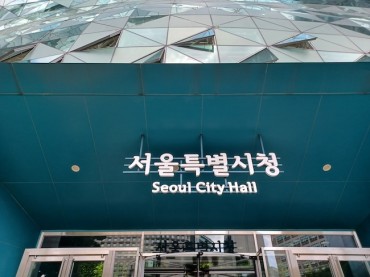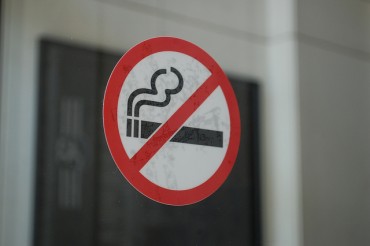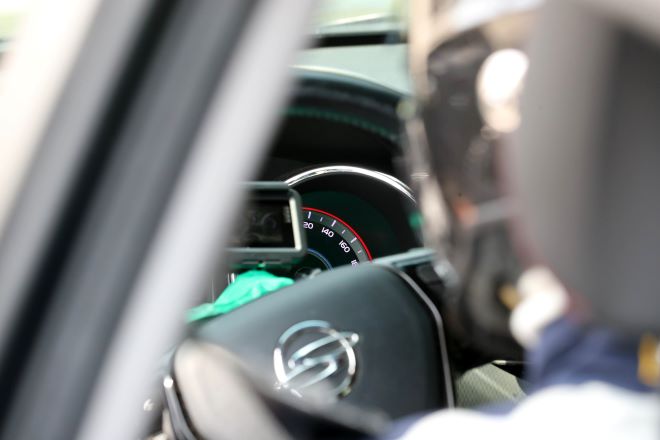
In Gangneung, Gangwon Province, a ‘reenactment test’ to determine whether a defect in the vehicle caused the sudden unintended acceleration of a car that killed Lee Do-hyun (12 years old at the time of his death) in December 2022 was held on the afternoon of April 19 at Hoesan-ro in Gangneung City. Cameras and transmission diagnostics are being installed on the 2018 Tivoli Air, the same model as the accident vehicle. (Image courtesy of Yonhap)
SEOUL, May 29 (Korea Bizwire) – Nearly a year and a half after his 12-year-old son, Lee Do-hyun, died in a suspected case of sudden unintended acceleration, Lee Sang-hoon remains torn by the results of a reenactment test that point to a vehicle defect but offer little solace.
On May 27, Lee’s legal team released the findings from the country’s first reenactment of the accident, conducted last month in the city of Gangneung where Do-hyun lost his life on Dec. 6, 2022. The tests aimed to determine whether the boy’s grandmother, who was driving, had mistakenly pressed the accelerator instead of the brake pedal.
The precise analysis suggested that was not the case, lending weight to Lee’s assertion of a mechanical problem with the 2018 Ssangyong Tivoli Air vehicle involved in the fatal crash.
“The reenactment proved that the grandmother did not make a pedal misapplication error,” said Ha Jong-sun, Lee’s lawyer, at the briefing held at Gangneung Church. “Since it was not a pedal error, it was a sudden acceleration caused by a vehicle defect.”
The two-hour reenactment on April 19 used the same model outfitted with a transmission diagnostic device provided by the manufacturer, SsangYong Motor, a subsidiary of KG Group.
Comparing the data with a previous analysis by the National Forensic Service, the tests found major discrepancies in speed changes when the accelerator was fully depressed, driving patterns and shift patterns, Ha said.
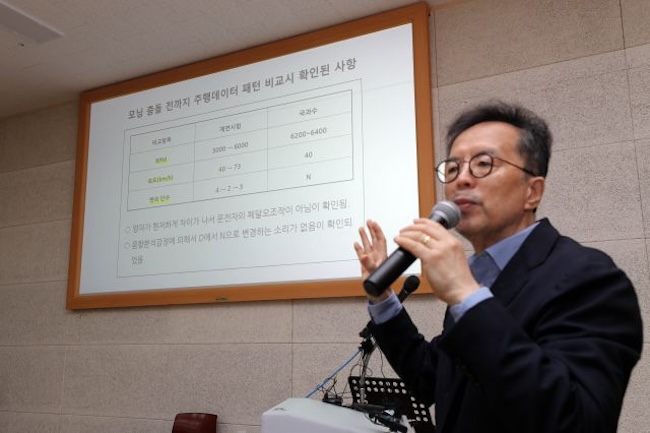
“The reenactment proved that the grandmother did not make a pedal misapplication error,” said Ha Jong-sun, Lee’s lawyer, at the briefing held at Gangneung Church. (Image courtesy of Yonhap)
According to the vehicle’s event data recorder, or EDR, in the final five seconds before the crash, the accelerator was fully engaged. But in the reenactment, depressing it for that duration accelerated the vehicle to 130 km/h, far exceeding the top speed of 116 km/h calculated by forensic investigators.
Lee’s team argued that the EDR recording full acceleration yet showing only a modest increase from 110 to 116 km/h suggested the grandmother must have applied the brakes.
“The EDR records the condition of the vehicle at that time, not the driver’s action,” Mr. Ha said, adding that basing claims of driver error solely on EDR data is flawed.
Driving patterns like speed, RPM and gear shifts also diverged sharply from the forensic findings. Just before hitting a Kia Morning car, accelerating from 40 km/h with the gear in drive caused the reenactment vehicle’s speed to rise to 73 km/h, RPMs to increase from 3,000 to 6,000, and gears to shift from fourth to second to third.
Investigators had found speed holding at 40 km/h and RPMs between 6,200 and 6,400 with the transmission in neutral.
After the initial collision, it took 18 seconds for the reenactment vehicle to accelerate from 44 to 120 km/h when the pedal was floored, compared to 24 seconds to reach 116 km/h in the forensic analysis — suggesting bouts of braking by the grandmother, Lee’s lawyers said.
The actual shift patterns and associated speed changes also contradicted manufacturer data in most cases, with discrepancies ranging from around 4 to as much as 81 km/h, rendering the company’s technical documentation inapplicable, according to Ha.
Lee arranged and helped execute the reenactment himself, soliciting an expert driver and having the route blocked off by local police. Under current product liability laws in South Korea, the burden of proving a defect falls on consumers like himself after an accident.
His team even staged an additional test to examine whether automatic emergency braking systems had activated, underscoring the extent to which Lee feels compelled to establish causation.
“While I have to conduct all possible reenactments and expert analyses, it’s really frustrating that the manufacturers don’t have any responsibility,” Lee said after the briefing, adding that identifying root causes scientifically should be the duty of automakers and investigators, not victims.
Lee plans to continue pushing for revisions to the product liability act to shift that burden to manufacturers when the new National Assembly convenes. Legislation to amend the law, introduced by lawmakers across party lines, failed to pass the previous parliament amid objections from regulators.
“Only when the law changes can such tragedies be prevented,” he said, vowing to seek support from new legislators and through a public petition.
Lee’s legal battle with SsangYong, in which he is seeking damages of around 7.6 billion won, continues on June 18 with the next hearing in Gangneung.
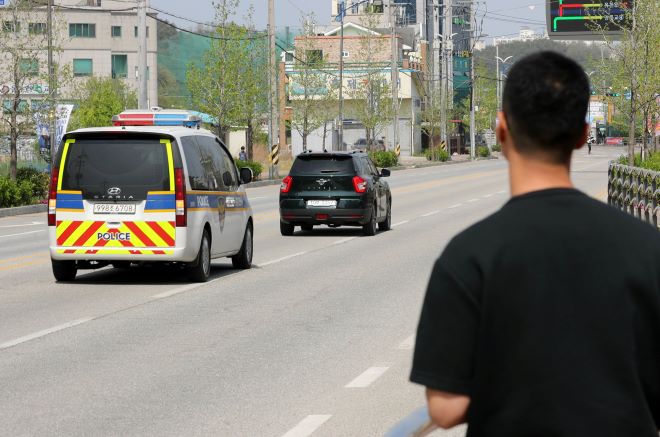
The “reenactment test” that will reveal whether the vehicle’s defect caused the sudden acceleration took place on the afternoon of April 19 at Hoesan-ro in Gangneung City. Lee Sang-hoon, the father of Lee Do-hyun, who lost his life in the sudden unintended acceleration accident, watches the reenactment test. (Image courtesy of Yonhap)
M. H. Lee (mhlee@koreabizwire.com)



